Comprehensive Guide to Garden Maintenance in Bald Hills
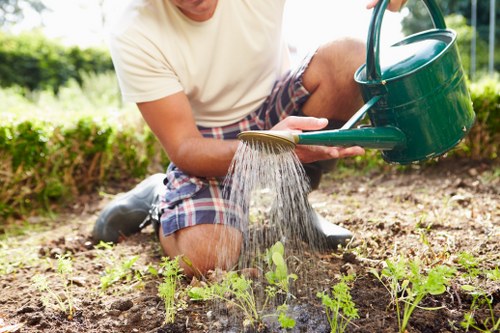
Maintaining a beautiful garden in Bald Hills requires a combination of knowledge, dedication, and the right resources. Whether you're a seasoned gardener or just starting out, understanding the specific needs of your plants and the local climate is essential for a thriving outdoor space.
The unique geographical features of Bald Hills, including its soil type and weather patterns, play a significant role in determining the best gardening practices. By tailoring your maintenance routine to these conditions, you can ensure that your garden remains vibrant and healthy throughout the year.
In this guide, we'll explore various aspects of garden maintenance in Bald Hills, from soil preparation and plant selection to pest control and seasonal care. You'll find practical tips and expert advice to help you create and sustain a lush, attractive garden.
Understanding Bald Hills' Climate and Soil
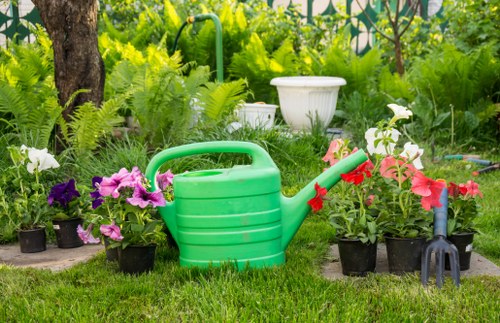
One of the first steps in effective garden maintenance is understanding the local climate. Bald Hills experiences a temperate climate with distinct seasons, which affects how plants grow and thrive. Summers can be warm and dry, while winters may bring cooler temperatures and occasional frost.
The soil in Bald Hills is predominantly sandy loam, which offers good drainage but may require amendments to improve fertility. Regular soil testing can help you determine the specific nutrients your garden needs, ensuring that your plants receive the optimal conditions for growth.
By adapting your gardening practices to the climate and soil types of Bald Hills, you can enhance plant resilience and reduce the likelihood of common issues such as drought stress or nutrient deficiencies.
Choosing the Right Plants for Your Garden
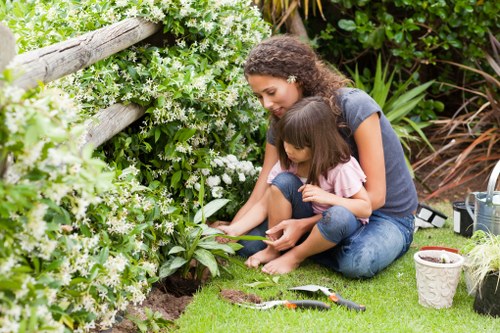
Selecting plants that are well-suited to Bald Hills' environment is crucial for minimizing maintenance efforts and promoting healthy growth. Opt for native species and those that are drought-tolerant to ensure they can withstand the local conditions.
- Native Plants: These plants are adapted to the local climate and soil, making them easier to care for and more resilient against pests and diseases.
- Drought-Tolerant Varieties: Given the warm, dry summers, choosing plants that require less water can reduce the need for frequent irrigation and conserve water resources.
- Seasonal Flowers: Incorporating a mix of evergreen and seasonal flowers can provide year-round color and interest in your garden.
Popular choices for Bald Hills include lavender, rosemary, eucalyptus, and various native grasses. These plants not only thrive in the local conditions but also contribute to the aesthetic appeal of your garden.
Soil Preparation and Fertilization
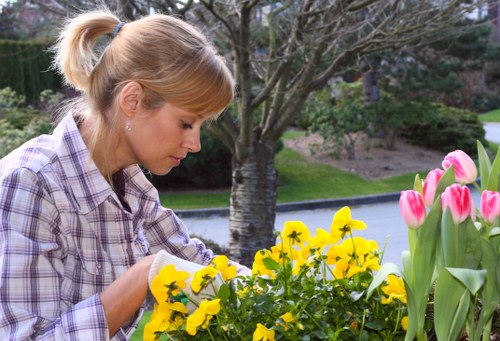
Proper soil preparation is the foundation of a successful garden. Begin by testing your soil to identify its pH level and nutrient content. Based on the results, you may need to amend the soil with compost, manure, or specific fertilizers to enhance fertility and structure.
Adding organic matter improves soil texture, increases water retention, and promotes beneficial microbial activity. Regular fertilization, tailored to the needs of your plants, ensures they receive the essential nutrients for robust growth.
Consider implementing crop rotation and green manuring practices to maintain soil health and prevent the buildup of pests and diseases. Healthy soil leads to healthier plants, which in turn reduces the need for chemical interventions.
Watering Strategies for Efficiency
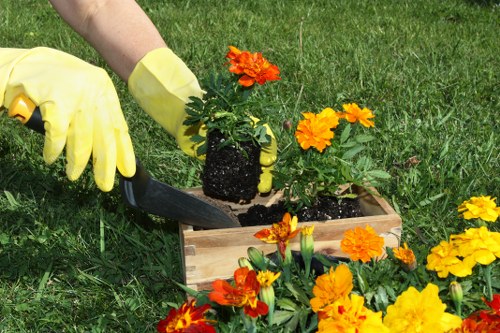
Efficient watering is key to maintaining a sustainable garden in Bald Hills. Drip irrigation systems and soaker hoses can deliver water directly to the plant roots, minimizing evaporation and reducing water waste.
Water your garden during the early morning or late evening to take advantage of cooler temperatures and decrease evaporation rates. Mulching around plants helps retain moisture, suppress weeds, and regulate soil temperature.
Implementing rainwater harvesting systems can also supplement your watering needs, making your garden more eco-friendly and cost-effective.
Pest and Disease Management

Keeping pests and diseases at bay is a critical aspect of garden maintenance. Regularly inspect your plants for signs of infestation or illness, such as discolored leaves, wilting, or unusual growths.
- Integrated Pest Management (IPM): This approach combines biological, cultural, and chemical methods to control pests with minimal environmental impact.
- Natural Predators: Encourage beneficial insects like ladybugs and spiders that prey on common garden pests.
- Organic Treatments: Use neem oil, insecticidal soaps, or homemade remedies to address pest issues without harming the ecosystem.
Early detection and prompt action are essential to prevent minor issues from escalating into major problems that could damage your garden.
Seasonal Garden Care

Adapting your maintenance routine to the changing seasons ensures that your garden remains healthy year-round. Each season presents unique challenges and opportunities for garden care.
Spring: Focus on planting new seeds, pruning shrubs, and preparing beds for the growing season. This is also a good time to apply fertilizers and mulch.
Summer: Implement efficient watering practices, monitor for pests, and provide shade to protect sensitive plants from intense sunlight.
Autumn: Clean up fallen leaves, plant bulbs for spring, and prepare perennials for winter. Reduce watering as temperatures drop.
Winter: Protect plants from frost, prune dormant trees, and plan for the upcoming gardening season.
Pruning and Trimming Techniques

Regular pruning and trimming are essential for maintaining the shape and health of your plants. Proper techniques help promote vigorous growth, improve air circulation, and prevent disease.
When pruning, always use clean, sharp tools to make precise cuts. Remove dead or diseased branches first, followed by any overgrown or crossing limbs. For flowering plants, pruning after the bloom can encourage more robust flowering in the next season.
Trimming also helps control the size of shrubs and trees, ensuring they fit well within your garden space and do not overshadow other plants.
Mulching and Weed Control

Mulching is a highly effective practice in garden maintenance. It involves applying a layer of material, such as bark, straw, or compost, around your plants to conserve moisture, suppress weeds, and regulate soil temperature.
- Moisture Retention: Mulch helps retain soil moisture, reducing the need for frequent watering.
- Weed Suppression: A thick layer of mulch prevents weed seeds from germinating by blocking sunlight.
- Soil Health: Organic mulches decompose over time, enriching the soil with nutrients and improving its structure.
Regularly replenishing mulch ensures continued benefits and maintains an attractive appearance in your garden.
Weed Management Strategies

Effective weed control is vital for maintaining a healthy garden. Weeds compete with your plants for nutrients, water, and light, potentially stunting their growth and reducing their productivity.
Adopt a combination of manual, mechanical, and chemical methods to manage weeds. Hand-pulling and hoeing are simple yet effective for small gardens, while mulching acts as a preventive barrier.
For larger infestations, consider using eco-friendly herbicides or natural weed control solutions to minimize environmental impact.
Maintaining Garden Tools and Equipment

Proper maintenance of your garden tools and equipment ensures longevity and efficiency. Regularly clean and sharpen tools to keep them in optimal condition, making your gardening tasks easier and more effective.
Store tools in a dry, sheltered area to prevent rust and damage. Inspect your equipment regularly for any signs of wear and tear, replacing or repairing items as needed to maintain their functionality.
Investing in high-quality tools can enhance your gardening experience, providing you with reliable instruments that withstand frequent use.
Local Gardening Resources in Bald Hills

Access to local gardening resources can greatly enhance your garden maintenance efforts. Bald Hills offers a variety of nurseries, garden centers, and community groups that provide valuable information and support.
Joining local gardening clubs can connect you with fellow enthusiasts, allowing you to share tips, attend workshops, and participate in community projects. Additionally, local extension services offer expert advice tailored to the area's specific gardening challenges.
Leveraging these resources ensures that you stay informed about the best practices and latest trends in garden maintenance, helping you achieve a thriving garden.
Community Support and Workshops

Engaging with the Baldwin Hills gardening community provides opportunities for learning and collaboration. Attend workshops and seminars hosted by local experts to gain insights into advanced gardening techniques and sustainable practices.
Community gardens are another excellent way to connect with others, offering hands-on experience and shared knowledge. Participating in these initiatives fosters a sense of camaraderie and mutual support among gardeners.
Sharing experiences and challenges with the community can lead to innovative solutions and a more enjoyable gardening journey.
Nearby Areas to Bald Hills for Gardening Services

Bald Hills is surrounded by several picturesque areas that offer unique gardening services and resources. Exploring these nearby locales can expand your gardening horizons and provide access to specialized expertise.
- Green Valley: Just 5 kilometers from Bald Hills, Green Valley is known for its expansive nurseries and specialized plant nurseries.
- Maple Ridge: Located 7 kilometers away, Maple Ridge offers expert landscape design services tailored to the local climate.
- Sunnybrook: 10 kilometers from Bald Hills, Sunnybrook is famous for its community gardens and seasonal workshops.
- Pine Grove: At a 12-kilometer distance, Pine Grove provides organic gardening supplies and eco-friendly pest control solutions.
- Riverbend: 15 kilometers away, Riverbend specializes in water-efficient irrigation systems and rainwater harvesting setups.
- Oakwood: Situated 8 kilometers from Bald Hills, Oakwood is renowned for its tree care and pruning services.
- Lakeside: 9 kilometers distant, Lakeside offers beautiful water gardens and pond maintenance services.
- Hilltop: Just 6 kilometers away, Hilltop is known for its rooftop and vertical gardening solutions.
- Willow Creek: 11 kilometers from Bald Hills, Willow Creek provides landscape lighting and garden decoration services.
- Granite Springs: 14 kilometers distant, Granite Springs specializes in rock gardens and xeriscaping.
Exploring these nearby areas allows you to access a broader range of gardening services, ensuring that your garden in Bald Hills remains in peak condition.
Conclusion

Maintaining a garden in Bald Hills is a rewarding endeavor that combines aesthetic pleasure with the satisfaction of nurturing living plants. By understanding the local climate and soil, choosing the right plants, implementing effective maintenance practices, and leveraging local resources, you can create a thriving and sustainable garden.
Remember to adapt your strategies to the seasons, manage pests and weeds thoughtfully, and take good care of your tools to ensure long-term success. Whether you're cultivating flowers, vegetables, or ornamental greenery, the steps outlined in this guide will help you achieve a lush and vibrant outdoor space.
Ready to transform your garden? Contact us today to book your garden maintenance service in Bald Hills and let our experts help you create the garden of your dreams.
